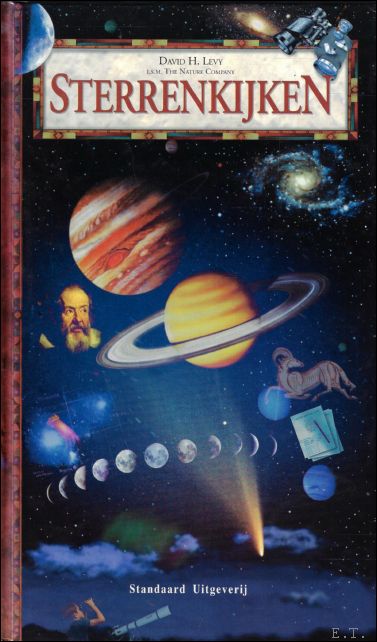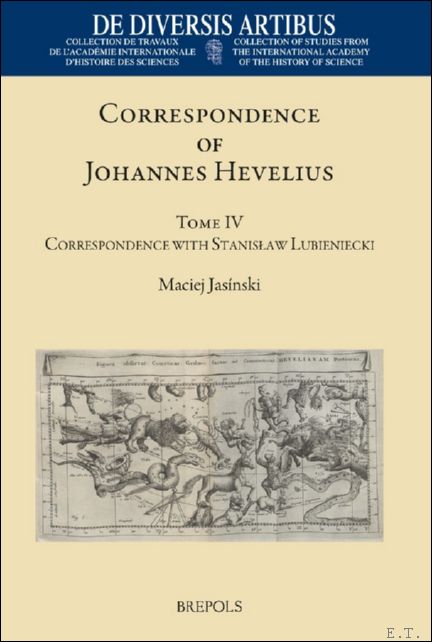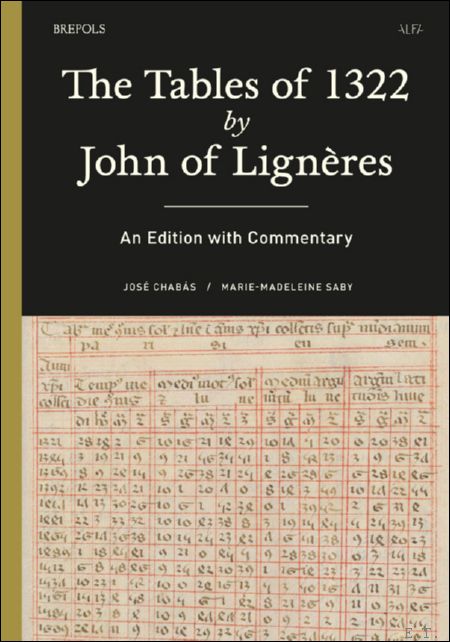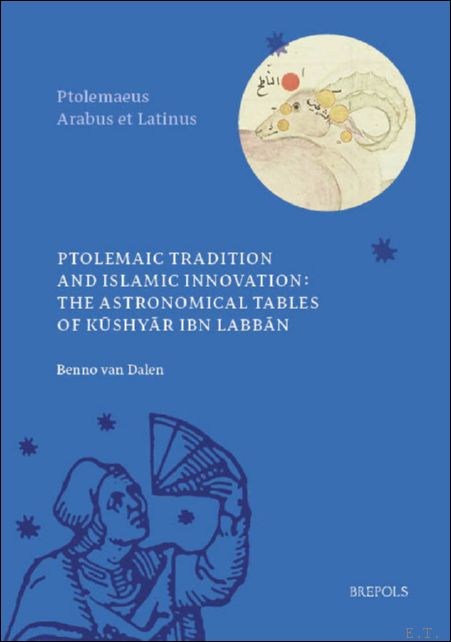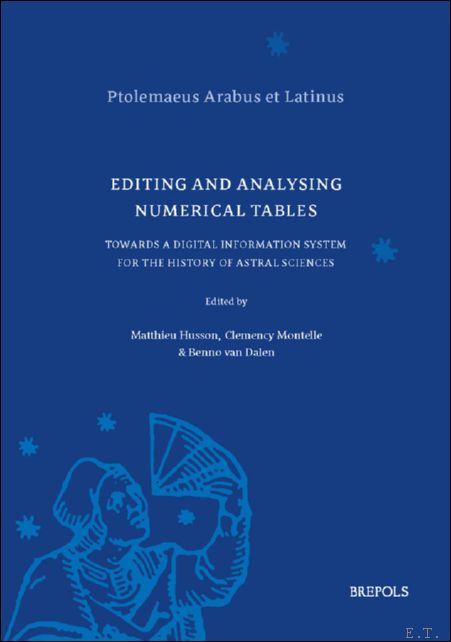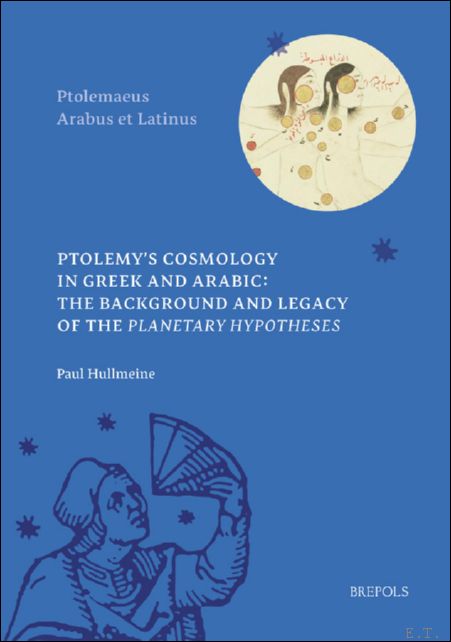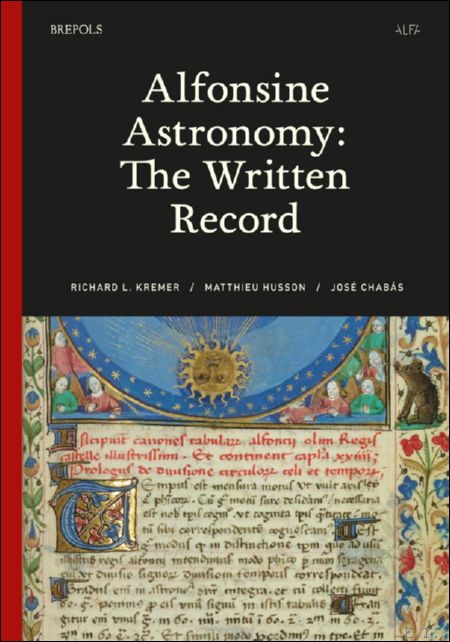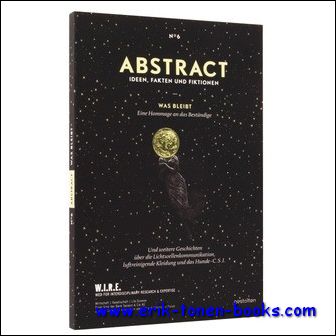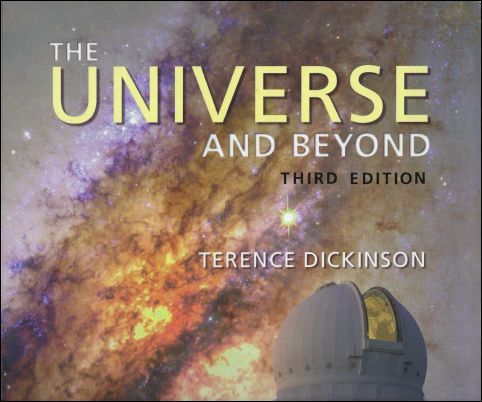Astronomy
9 Bücher gefunden
Seite 1
David H. Levy
Sterrenkijken
Antwerpen, Standaard uitgeverij, 1995. Geillustreerde kartonomslag, 288 pagina's, illustraties in kleur. ISBN: 9789060913659
Vanaf het allereerste begin van de mensheid heeft de mens omhoog gekeken, nieuwsgierig, verwonderd, bevreesd. De vrees is misschien verdwenen, de verwondering en de nieuwsgierigheid zijn gebleven. Sterrenkijken is een fascinerende alomvattende gids voor het rijk der sterren en planeten: van de eerste ster in de avond tot de pracht van de verre melkwegen.
Buchnummer: 64837 | Preis: EUR 10.00
Johannes Hevelius, Stanislaw Lubieniecki
The The Correspondence of Johannes Hevelius. Volume IV. The Correspondence with Stanislaw Lubieniecki
Brepols, 2021. Hardback, 573 pages, Size:156 x 234 mm, Illustrations:22 b/w, Language(s):English, Latin, French. ISBN: 9782503571188
Summary Stanislaw Lubieniecki (1623-1675) was a Polish nobleman and adherent to the Unitarian religion. After his coreligionists were expelled from Poland and Lithuania in 1658, he settled in Hamburg and in the neighbouring town of Altona. When a comet appared in the sky in late 1664, Lubieniecki entered into correspondence with about forty astronomers, mathematicians and other scholars - Giovanni Battista Riccioli, Athanasius Kircher, Otto von Guericke, Erasmus Bartholin and Ismaël Boulliau, among others. Johannes Hevelius was one of the addressees of his letters, and their correspondence turned out to be long-lasting and abundant. In the years 1664-1673, they exchanged 92 letters (31 from Hevelius, 61 from Lubieniecki). This correspondence is the fourth most voluminous in the entire corpus of Hevelius's letters. Hevelius was a reputed astronomer, sometimes unwilling to share his observations and ideas, and Lubieniecki was an interested dilettante, striving to learn more about the comets of 1664 and 1665 and other astronomical phenomena as well as their significance. He wanted to collect as many accounts of contemporary and historical comets as possible, and he published them in his Theatrum cometicum. Even though at the same time Hevelius worked on his Cometographia, they both realized that their books touched upon different aspects of cometary studies: historical in the Theatrum cometicum and astronomical in Cometographia. This volume is a part of the edition of Johannes Hevelius's correspondence. The collection of letters, whose manuscripts are kept in the Library of the Paris Observatory, has not been published nor thoroughly studied yet. TABLE OF CONTENTS INTRODUCTION 1 : Stanislaw Lubieniecki and his Theatrum cometicum 1.1. The Life of Stanislaw Lubieniecki 1.2. Outline of Cometary Studies in Lubieniecki's Time 1.3. Theatrum cometicum 2 : The Hevelius-Lubieniecki Correspondence 2.1. The Number of Letters 2.2. Overview of the Correspondence 2.3. Hevelius's Input to Lubieniecki's Cometary Discussions 2.4. Overlap of Hevelius's and Lubieniecki's Networks 3 : Lubieniecki and the Heavens 3.1. Lubieniecki and the Theatrum cometicum in the Critical Literature 3.2. Lubieniecki and Astronomy 3.3. Lubieniecki and Astrology 3.4. Lubieniecki's Astronomical Correspondence 3.5. Letters in the Theatrum cometicum 4 : Editorial Principles CORRESPONDENCE APPENDICES Appendix 1. : Lubieniecki's Extract from Hevelius's Prodromus cometicus Appendix 2. : Lubieniecki's Extract from Hevelius's Descriptio cometae Appendix 3. : Lubieniecki's Opinion on the Meaning of Comets BIBLIOGRAPHY INDICES
Buchnummer: 65167 | Preis: EUR 95.00
José Chabás, Marie-Madeleine Saby
The Tables of 1322 by John of Lignères. An Edition with Commentary
Brepols, 2023. Hardback, 159 pages, Size:178 x 254 mm, Illustrations:4 col., 32 tables b/w., Language: English. ISBN: 9782503596099
Summary Medieval astronomers used tables to solve most of the problems they faced. These tables were generally assembled in sets, which constituted genuine tool-boxes aimed at facilitating the task of practitioners of astronomy. In the early fourteenth century, the set of tables compiled by the astronomers at the service of King Alfonso X of Castile and León (d. 1284), reached Paris, where several scholars linked to the university recast them and generated new tables. John of Lignères, one of the earliest Alfonsine astronomers, assembled his own set of astronomical tables, mainly building on the work of previous Muslim and Jewish astronomers in the Iberian Peninsula, especially in Toledo. Two major sets had been compiled in this town: one in Arabic, the Toledan Tables, during the second half of the eleventh century, and the Castilian Alfonsine Tables, under the patronage of King Alfonso. This monograph provides for the first time an edition of the Tables of 1322 by John of Lignères. It is the earliest major set of astronomical tables to be compiled in Latin astronomy. It was widely distributed and is found in about fifty manuscripts. A great number of the tables were borrowed directly from the work of the Toledan astronomers, while others were adapted to the meridian of Paris, and many were later transferred to the standard version of the Parisian Alfonsine Tables. Therefore, John of Lignères' set can be considered as an intermediary work between the Toledan Tables and the Parisian Alfonsine Tables. TABLE OF CONTENTS Preface John of Lignères: Iberian Astronomy settles in Paris 1. John of Lignères' works 2. Works attributed to John of Lignères 3. The set of tables 4. An edition 5. Commentaries to the tables Edition of the Tables with Comments 1. Sine 2. Shadow 3. Solar declination 4. Ascensional difference 5. Right ascension 6. Oblique ascension 7. Equation of time 8. Planetary latitudes 9. Lunar latitude 10. Daily unequal motion of the planets 11. Retrogradation of the planets 12. Planetary stations 13. Planetary phases 14. Mean syzygies for collected years 15. Mean syzygies for expanded years 16. Mean syzygies for months in a year 17. Mean motion in elongation 18. Corrections of the hourly lunar motion 19. Equations and hourly velocities of the Sun and the Moon 20. Velocities of the Sun and the Moon in a minute of a day 21. Velocities of the Sun and the Moon at intervals of 6º 22. Parallax 23. Proportions for correcting lunar parallax 24. Solar eclipses with argument of lunar latitude as argument 25. Solar eclipses with lunar latitude as argument 26. Lunar eclipses with argument of lunar latitude as argument 27. Lunar eclipses with lunar latitude as argument 28. Eclipsed parts of the solar and lunar discs 29. Finding lunar latitude from the argument of latitude 30. Corrections 31. Tabula reflexionis tenebrarum 32. Proportions at intervals of 2º List of manuscripts Bibliography
Buchnummer: 64482 | Preis: EUR 65.00
Kushyar ibn Labban al-Jilli, Benno van Dalen (ed)
Ptolemaic Tradition and Islamic Innovation: The Astronomical Tables of Kushyar ibn Labban
Brepols, 2022. Hardback, xviii + 614 pages, Size:178 x 254 mm, Illustrations:8 b/w, 16 col., 159 pages of tables, Language(s):English, Arabic. ISBN: 9782503593418
Summary The Jami'Zij (Comprehensive Zij) was a highly popular Arabic astronomical handbook with tables written by the Iranian astronomer Kushyar ibn Labban al-Jili around the year 1000. It belonged to an important category of works, modelled after Ptolemy's Almagest and Handy Tables, that allowed the practising astronomer/astrologer to carry out all necessary calculations of arcs on the celestial sphere and planetary positions, and ultimately to cast horoscopes. Around one hundred such works are extant, but only very few have been edited, translated or studied in detail. This book contains a full treatment of Book II of Kushyar's astronomical handbook centred around a critical edition of all the mathematical tables and their paratexts. It sets new standards for the edition of such tables by designing new types of apparatus entries for related variants in the tabular values. The introductory part describes the eight surviving manuscripts that transmit Kushyar's tables and establishes by a detailed survey that they represent at least three different versions of the Jami'Zij that in all likelihood stem from Kushyar himself. An extensive commentary with mathematical analyses uncovers numerous new details of the methods by which the tables were computed, the astronomical parameter values on which they were based, the sources for the tables, and their influence on later zijes. These results show how Kushyar, on the one hand, stayed firmly within the framework of the Ptolemaic tradition, but on the other introduced several types of innovations that later became common in Arabic and Persian astronomical handbooks. TABLE OF CONTENTS Preface Part I: Introduction Part II: Tables Part III: Texts Part IV: Commentary Quick references: zijes and technical concepts for the analysis of tables Indexes Bibliography
Buchnummer: 65065 | Preis: EUR 120.00
Matthieu Husson, Clemency Montelle, Benno van Dalen (eds)
Editing and Analysing Numerical Tables. Towards a Digital Information System for the History of Astral Sciences
Brepols, 2022. Hardback, ix + 615 pages, Size:178 x 254 mm, Illustrations:58 b/w, 16 col., Language: English. ISBN: 9782503596068
Summary Astronomical tables are a significant yet understudied part of the scientific historical corpus. They circulated among many cultures, and were adopted and transformed by astronomical practitioners for a variety of purposes. The numerical data conveyed in these tables provides rich evidence for pre-modern scientific practices. In the last fifty years, new approaches to the analysis and critical editing of astronomical tables have flourished due to advances in computing power and associated modern mathematical tools. In more recent times, the rapid growth of digital humanities and modern data analysis promises exciting further developments in this area. The present collection of studies on astronomical tables captures this momentum. It is a result of long-term collaborative work on building a database of astronomical tables and other objects found in manuscripts, released under the name DISHAS (Digital Information System for the History of Astral Sciences). The fourteen contributions in this volume provide a broad coverage of astronomical traditions throughout Eurasia and North Africa, which, with very few exceptions, find their roots in the mathematical astronomy of Ptolemy. The contributions include critical editions of previously unexamined astronomical tables along with insightful mathematical analyses, as well as reflective methodological surveys that open up new perspectives for research on these fundamental sources for the history of mathematics and astronomy. TABLE OF CONTENTS Matthieu Husson, Clememcy Montelle and Benno van Dalen Introduction Part 1 : Classical Approaches to Table Cracking Glen Van Brummelen , Matthieu Husson, and Clemency Montelle Tools of the Table Crackers: Using Quantitative Methods to Analyze Historical Numerical Tables José Chabás and Bernard R. Goldstein The Almanac of Jacob ben Makhir Sebastian Falk Copying and Computing Tables in Late Medieval Monasteries Kailyn Pritchard Determining the Sine Tables Underlying Early European Tangent Tables Part 2 : Editing and Analysing Astronomical Tables Clemency Montelle Editing Sanskrit Astronomical Tables: The Candr?rk? of Dinakara (1578 CE) Anuj Misra Recomputing Sanskrit Astronomical Tables: The Am?talahar? of Nity?nanda (c. 1649/50 CE) Part 3: Computational Practices and Table Cracking Li Liang Tables of Sunrise and Sunset in Yuan and Ming China (1271-1644) and their Adoption in Korea Glen Van Brummelen The Tables of Planetary Latitudes in Jamsh?d al-K?sh?'s Kh?q?n? Z?j Sho Hirose Equation Tables in the D?gga?ita of Parame?vara Richard Kremer Cracking the Tabulae permanentes of John of Murs and Firmin of Beauval with Exploratory Data Analysis Part 4: Pushing Approaches to Table Analysis Further Matthieu Husson Computing with Manuscripts: Time between Mean and True Syzygies in John of Lignères' Tabule magne Johannes Thomann Reverse Engineering Applied to Ephemerides: Analysis and Edition of the Arabic Ephemeris of 1326/27 CE (MS Cairo, D?r al-Kutub, m?q?t 817) Benno van Dalen The Geographical Table in the Sh?mil Z?j: Tackling a 13th-Century Arabic Source with the Aid of a Computer Database
Buchnummer: 64914 | Preis: EUR 95.00
Ptolemy, Paul Hullmeine (ed)
Ptolemy's Cosmology in Greek and Arabic. The Background and Legacy of the Planetary Hypotheses
Brepols, 2024. Hardback, 479 pages, Size:178 x 254 mm, Illustrations:10 b/w, 4 tables b/w., Language(s):English, Arabic. ISBN: 9782503607177
Summary Ptolemy's Almagest (2nd century AD) is the most influential work of ancient and medieval astronomy. This work, however, does not tell us the full story about its author's views of the heavens. After completing the Almagest, Ptolemy turned his attention to a physical investigation of celestial motions. The result is the Planetary Hypotheses, a bold attempt to provide a celestial physics that coheres with the mathematical account of astronomical observations in his Almagest. This book provides the first complete critical edition and English translation of the Arabic version of the Planetary Hypotheses, which is lost for the most part in its original Greek. It furthermore provides an extensive commentary on the whole work, which situates the Planetary Hypotheses within the context of its time and investigates philosophical ideas central to the work. These include the epistemic value of mathematics relative to natural philosophy, and the shape, number, and dynamics of the celestial bodies. The book also investigates the influence of the Planetary Hypotheses on a wide range of medieval Arabic astronomical and philosophical works from the 9th to the 13th century AD. The upshot is to establish the Planetary Hypotheses as a crucial text for understanding the history of philosophy and science from Greek antiquity to the Arabic Middle Ages TABLE OF CONTENTS I Introduction II Astronomy, Natural Philosophy, and the Physical Reality of the Celestial Bodies III The Dynamics of Celestial Motions IV Conclusion V The Arabic Version of the Planetary Hypotheses: Edition and Translation VI Commentary Glossary Bibliography Index
Buchnummer: 65014 | Preis: EUR 110.00
Richard Kremer, Mathieu Husson, José Chabás (eds)
Alfonsine Astronomy: The Written Record
Brepols, 2022. Hardback, 426 pages, Size:178 x 254 mm, Illustrations:56 col., 15 tables b/w., Language: English. ISBN: 9782503595207
Summary Compiled between 1262 and 1272 in Toledo under the patronage of Alfonso X, the Castilian Alfonsine Tables were recast in Paris in the 1320s, resulting in what we now call the Parisian Alfonsine Tables. These materials circulated widely and fostered astronomical activities throughout Europe. This resulted in a significant number of new works, of which there are a few hundred, extant in more than 600 manuscript codices and dozens of printed editions. These manuscripts and imprints, broadly contemporary to the works they witness, comprise the written record of Alfonsine astronomy and provide the focus of this volume. A first series of essays examines individual manuscripts containing Alfonsine works. The authors seek to reconstruct, from the manuscript evidence, the cultural, astronomical and mathematical worlds in which the manuscripts were initially copied, compiled, used and collected. A second series of essays turns from the particular codex to the individual work or author. These contributions ask how particular works have been transmitted in surviving manuscript witnesses and how broader manuscript cultures shaped the diffusion, over two centuries, of Alfonsine astronomy across Europe. A final essay reflects on the challenges and opportunities offered by digital humanities approaches in such collective studies of a large manuscript corpus. TABLE OF CONTENTS Richard L. Kremer, Matthieu Husson and José Chabás, Introduction Part I Laura Fernández, The Libro de las tablas alfonsies: New Documentary and Material Source Jean-Patrice Boudet, Laure Miolo, Alfonsine Astronomy and Astrology in Fourteenth-Century Oxford: The Case of MS Bodleian Library Digby 176 Richard L. Kremer, Exploring a Later Fifteenth-Century Astrologer's Toolbox: British Library Add Ms 34603 Alexandre Tur, From Computus Material to Preacher's Toolbox: Manufacturing a Bat-Book Almanac in the Fifteenth Century Eric Ramírez-Weaver, Bohemian King Wenceslas IV's Copy of the Alfonsine Tables and Their Place within his Astronomical and Astrological Corpus Part II José Chabás, Marie-Madeleine Saby, Editing the Tables of 1322 of John Lignères Alena Hadravová, Petr Hadrava, John of Lignères Quia ad inveniendum loca planetarum: An Edition and Translation José Chabás, New Texts and Tables Attributed to John of Lignères: Context and Analysis Mathieu Husson, Work Cohesion as a Test of Manuscript Transmission: The Case of John of Lignères' Tabule magne Laure Miolo, Retracing the Tradition of John of Genoa's Opus astronomicum through Extant Manuscripts Glen Van Brummelen, All In: Manuscripts of the Works of Giovanni Bianchini in the Fifteenth Century Galla Topalian, Mathieu Husson, From Document to Data: The Digital Projects of ALFA
Buchnummer: 64568 | Preis: EUR 85.00
S. Achermann, D. Butler, M. Wannaz, S. Sigrist, B. Varnholt, G. Folkers
ABSTRACT: Ideen, Fakten und Fiktionen N?°6
Gestalten, 2012. Softcover, 15,5 x 23 cm, 168 Seiten, vollfarbig, German, Fine copy. Including an index. ISBN: 9783899554281
Ob man Veranderungen begrusst oder um liebgewonnene Gewohnheiten bangt: Fest steht, es brodelt gerade heftig auf unserem Planeten. Jetzt widmet sich die neue Ausgabe von ABSTRACT einem Thema, namlich was durch die Menschheitsgeschichte hinweg Bestand hat. Sie fragt, ob es das Leben an sich ist, das naturgemass gleich bleibt? Oder ist es der Mensch, der bewahrt? Antworten und Anregungen liefern Beitrage von Experten aus verschiedenen Disziplinen, die wissenschaftliche Seriositat und Unterhaltung, inhaltlichen Tiefgang und Uberblick, Wissenswertes und Skurriles zusammenfuhren.
Buchnummer: 45416 | Preis: EUR 18.00
Terence Dickinson
The universe and beyond
Ontario, Firefly Books, 1999. 3e. Softcover, 168 pp, 260 x 260, with numerous colorful illustrations, in great condition . ISBN: 9781552093610
Award-winning astronomy writer Terence Dickinson takes readers on a factual journey in space and time from the Earth's surface to the most remote boundaries of the universe - and beyond. This major revision of an astronomy classic features 50 new photographs and illustrations, including the latest images from the Hubble space telescope, the Galileo spacecraft and other NASA missions. Additional imagery of the universe is from recently completed giant telescopes situated at remote mountaintops in Hawaii and Chile. This edition also includes extensively updated information on Mars and Jupiter; a completely new section on comets; full coverage of the latest evidence for the existence of black holes; an expanded section on galaxies and the mysterious "dark matter"; a fully updated section on the size, age and destiny of the universe; and expanded data tables using information released in 1998 from the Hipparchos satellite, which achieved a tenfold increase in the accuracy of celestial distance determination.
Buchnummer: 47298 | Preis: EUR 20.00
Seite 1









